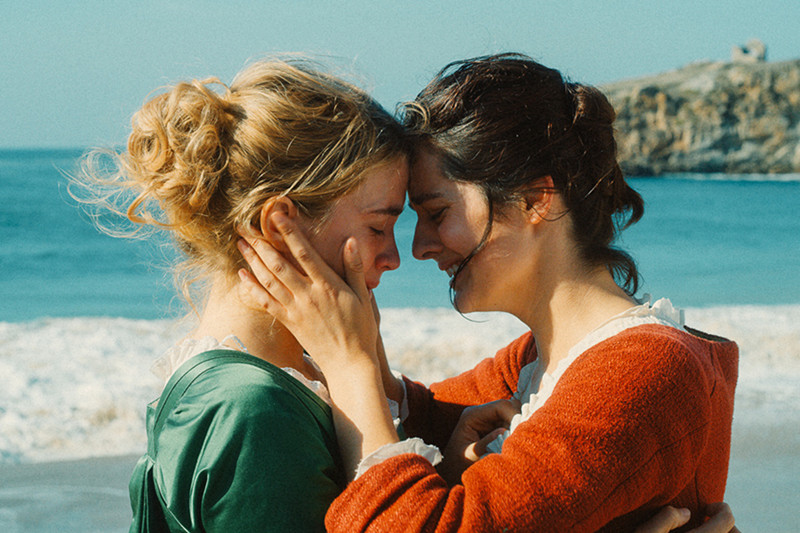
French formalist writer-director Céline Sciamma (Girlhood [2014]) is completely in her element with her exquisitely tender costumer, the laudable and lovely new film Portrait of a Lady on Fire. Having already achingly smouldered earlier this year at Cannes where it rightfully netted the award for Best Screenplay, Sciamma’s painterly perfection focusses on Marianne (Noémie Merlant) a 19th-century painter commissioned to a lush island home to paint the wedding portrait of ravishing young Héloïse (Adèle Haenel). But there will be nothing uncomplicated about this discreet art assignment for either party.
A keenly observed, at times even idiosyncratic meditation on the female gaze, Portrait of a Lady on Fire is a sometimes subtly seething study of the grace notes and gradations of falling in love in an era when a love such as this wasn’t just forbidden but also unthinkable. For Héloïse, recently released from a nunnery and grieving the death of her sister, whom most likely took her own life (another taboo that permeates the periphery of this haunting tale) is sinking inside, knowing that she’s doomed to wed against her wishes, an absolute stranger (and one we never meet, for this story isn’t his).
Given specific instructions from Héloïse’s mother, the Comtesse (Valeria Golino), to not let Héloïse know she’s observing her for a wedding portrait––she’s utterly opposed to the betrothal and therefore would never sit for it––Marianne is immediately given a challenge and a secret. Having been told by the Comtesse that Héloïse’s previous portrait artist failed miserably, Marianne’s struggle immediately mounts.
As Marianne begins to observe and slowly buddy up with Héloïse a closeness soon kindles and when the Contessa absconds the island for a few days, the two women fall hard for one another. Their mutual amour is brightly spurred by Sophie (Luàna Bajrami), one of Héloïse’s housemaids, and it must be said that the three actors are outstanding in their challenging and commendable roles. Their scenes together, particularly one involving Sophie’s visit to get an abortion, wrenchingly performed while the woman abortionist’s own children lie next to her during the procedure, rattles and recalls such desperation. It’s really something.
Taking pains to eerily echo Greek mythology (Orpheus turning back to see Eurydice is a persistent motif), and the period-perfect 18th-century Brittany details make the film all the more easy to get deliriously lost in. At times the spirit of Daphne du Maurier (the windswept grandeur and ghostly visage of “Rebecca” is elegantly implied here and there) also seems close to Sciamma’s capable and confident hands.
The deeper that Marianne and Héloïse sink into their foreordained love the more their world seems to feel like tragic symbolization, and the film is gorgeously lit to look like Neoclassical paintings from the era (is that the work of Jean-Auguste-Dominique Ingres we see in a gallery near the film’s finish?).
Seductively shattering and intimately breathtaking, Portrait of a Lady on Fire may leave certain aspects of these women’s deeply partaken love as emotionally unresolved, but it’s all so swooningly photographed, magnificently acted, stirringly told, and with a tone so close to illusory––as such it’s quite stunning.
Taste of Cinema Rating: 5 stars (out of 5)
Author Bio: Shane Scott-Travis is a film critic, screenwriter, comic book author/illustrator and cineaste. Currently residing in Vancouver, Canada, Shane can often be found at the cinema, the dog park, or off in a corner someplace, paraphrasing Groucho Marx. Follow Shane on Twitter @ShaneScottravis.